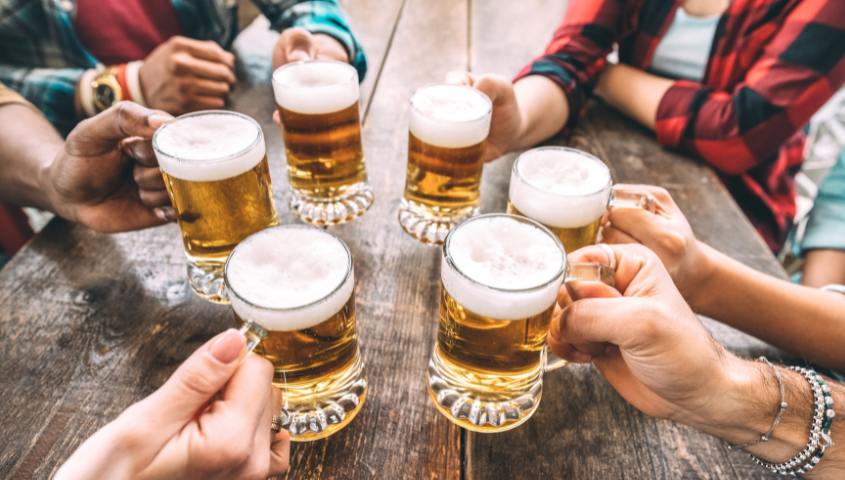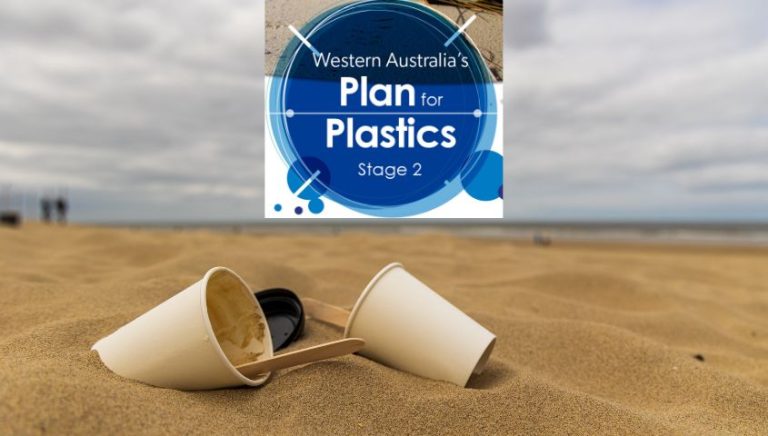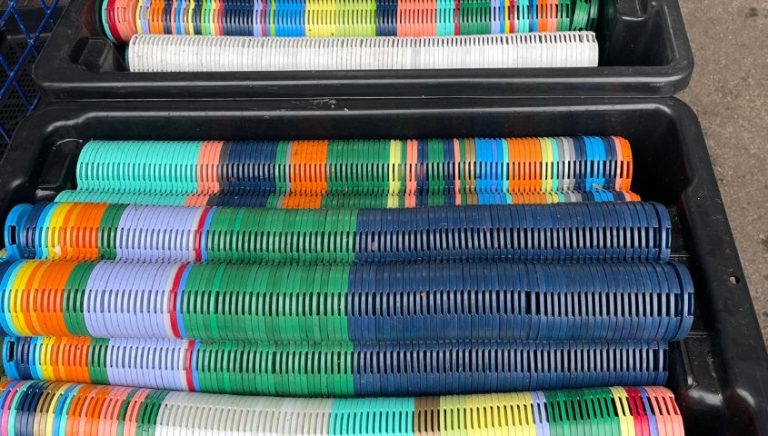This is an environmental scan (e-scan) I wrotte for one of my assignments for the Diploma of Sustainability Living. The task at hand, was to research and summarise the current issues in the brewing industry.
During my e-scan, I discovered that limited research on the brewing industry had been conducted in Australia. In particular, research on the sustainability of current supply chains and cross-industrial and cultural collaboration within the brewing industry seems to be missing. Recent media articles show promising innovation in food waste, a collaboration of breweries with farmers and charities, as well as several sustainable, cost-effective practices to avoid the creation of waste, emissions and energy usage.
| Sustainability issue | SDG* | Academia | Government | Advocacy / NGOs | Media |
|---|---|---|---|---|---|
| Brewing generates large amounts of waste by-products (solids and liquids) that need to be addressed. | SDG 6, 7, 11, 12, 13, 14, 15 | Bonato. S. V. et al., 2022 | |||
| Brewery is a water-intensive industry where the waste stream consists mostly of wastewater originating from the processing and cleaning of equipment. | SDG 6, 12 | Ashraf A. et.al., 2021 / Olajire A., 2020 | |||
| The disposal of brewery wastewater can lead to the contamination of rivers or other public waters. | SDG 6, 15 | Fish H., 2015 | |||
| Spent grain makes up 85% of waste by-products and if disposed of in landfills creates methane. It can be mitigated by finding opportunities for recycling, upcycling or reuse. E.g. animal feed, human food, composting, biogas, a substrate for mushroom production, food packaging etc. | SDG 12, 13, 15 | Chetrariu, A. & Dabija, A. 2020 / Nocente F at. Al. 2019 / Chetrariu, A. & Dabija, A. 2020 | |||
| Brewing beer is highly energy intensive. Some breweries use renewable energy sources such as solar, wind, biogas or biomass to reduce environmental impact and costs. | SDG 12, 7 | Inyang Jnr, E. 2020 / Olajire A., 2020 | Climate Council, 2018 | ||
| Birds and seabird species can get entangled in plastic waste. New innovative solutions are now available in Australia, e.g. collection of plastic beer clips for reuse and recycling. | SDG 9, 12, 14 | Ryan G. P., 2018 | The West Australian, 2022 / Packaging news, 2021 | ||
| Within the craft beer industry, there are opportunities to save money on produce and differentiate as a sustainable brewery, e.g. by sourcing over-ripe fruit from local farmers or by cooperating with charities such as Oz Harvest to reduce food waste. | SDG 11, 15 | Allen B., 2022 / Welby A., 2022 | |||
| Selling beer to a local market and sourcing barley from local farmers creates jobs and therefore supports the local economy. | SDG 8 | Brewers Association, 2022 / Langley M., 2021 | |||
| The beer uses a large amount of glass and aluminium packaging, which results in waste and associated transport emissions. Most Australian states have introduced Container Deposit Scheme (CDS) to capture drink containers. Some craft breweries choose lighter aluminium packaging to lower the emissions associated with transport. | SDG 9, 13 | Whitby R., 2022 | Climate Council, 2018 | ||
| Some craft breweries collaborate with Indigenous organisations to produce beers using native Australian plants to promote cultural significance and connectivity to the land. | SDG 11, 15 | Welby A. 2022 |
REFERENCE LIST
- Allen B. 2022, National Liquor News, Food and Beverage media, WA brewer turns unsold doughnuts into beer, viewed 14 January 2023, <https://theshout.com.au/national-liquor-news/wa-brewer-turns-unsold-doughnuts-into-beer/>.
- Arreza J. 2021, Packaging News, Endeavour’s Aus-first beer can clip recycling scheme, viewed 14 January 2023, <www.packagingnews.com.au/beverage/endeavour-s-aus-first-beer-can-clip-recycling-scheme>.
- Ashraf A. et.al. 2021, Wastewater treatment and resource recovery technologies in the brewery industry: Current trends and emerging practices, Sustainable Energy Technologies and Assessments, Volume 47.
- Bonato. S. V. at. Al. 2022, The missing link of circularity in small breweries’ value chains: Unveiling strategies for waste management and biomass valorization, Journal of Cleaner Production, Volume 336.
- Bremmer J. 2022, The West Australian, New plastic beer clip reuse and recycling scheme from Donut Waste unveiled in BWS and Dan Murphy’s, viewed 14 January 2023, <https://thewest.com.au/business/startup/new-plastic-beer-clip-reuse-and-recycling-scheme-from-donut-waste-unveiled-in-bws-and-dan-murphys–c-5519721>.
- Brewers Association 2022, New report from the Brewers Association on national agriculture day shows just how much Aussie farmers contribute to Australian made beer, Brewers Association, viewed 14 January 2023, <https://www.brewers.org.au/new-report-from-the-brewers-association-on-national-agriculture-day-shows-just-how-much-aussie-farmers-contribute-to-australian-made-beer/>.
- Chetrariu, A. & Dabija, A. 2020, Brewer’s Spent Grains: Possibilities of Valorization, a Review. Applied Sciences. [Online]. 10 (16). p.p. 5619. viewed 14 January 2023, <http://dx.doi.org/10.3390/app10165619>.
- Climate Council 2018, Australia’s top renewable brews, viewed 14 January 2023, <www.climatecouncil.org.au/australias-top-renewable-brews>.
- Fish H. 2015, Effects of the Craft Beer Boom in Virginia: How Breweries, Regulators, and the Public Can Collaborate to Mitigate Environmental Impacts’, William & Mary Environmental Law and Policy Review, 40, 273–305.
- Inyang Jnr. E. 2020, Sustainable Brewing: A Study of Sustainable Brewing Practices (Unpublished master’s project). University of Calgary, Calgary, AB., viewed 14 January 2023, <http://hdl.handle.net/1880/112637>.
- Langley M. 2021, Australian Farmers, National Farmers’ Federation 2023, Trace your beer back to the barley crop, viewed 16 January 2023, <https://farmers.org.au/news/trace-your-beer-back-to-the-barley-crop/>.
- Olajire A. 2020, The brewing industry and environmental challenges, Journal of Cleaner Production, Volume 256, viewed 14 January 2023, <https://doi.org/10.1016/j.jclepro.2012.03.003>.
- Nocente F. et. al. 2019, CREA Research Centre for Engineering and Agro-Food Processing, Upcycling of brewers’ spent grain by production of dry pasta with higher nutritional potential, LWT, Volume 114.
- Ryan G. P. 2018, Entanglement of birds in plastics and other synthetic materials, Marine Pollution Bulletin, Volume 135, 2018, Pages 159-164.
- Welby A. 2022, Rolling Stone, The Brag Media, The Story of Beerfarm: WA’s Sustainability-Focused Craft Brewery, viewed 16 January 2023, <https://au.rollingstone.com/product-recommendations/lifestyle/the-story-of-beerfarm-was-sustainability-focused-craft-brewery-36592/l/sustainability-is-the-name-of-the-game>.
- Whitby R. 2022, Minister for Environment; Climate Action; Racing and Gaming, Media Statement, Have your say: should WA’s Container Deposit Scheme include wine, spirit and other bottles?, viewed 14 January 2023, <www.mediastatements.wa.gov.au/Pages/McGowan/2022/12/Have-your-say-should-WA’s-Container-Deposit-Scheme-include-wine,-spirit-and-other-bottles.aspx>.



